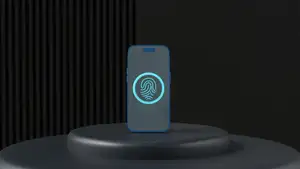
Enhancing Trust in Artificial Intelligence with ID Verification
The emerging field of generative Artificial Intelligence (AI) has been the recent focus of attention for many businesses worldwide. According to several new reports, more than half of global organizations using AI systems in one way or another also now use generative AI. Many market leaders are speeding toward trying to figure out how AI tools might be effectively incorporated into their day-to-day operations to remain relevant and competitive. One such way is new AI tools being developed faster than ever.
However, due to the nature of AI and how quickly organizations are adopting it, an increasing number of ethical and security issues are not being considered as they are more focused on adopting the modern age’s most innovative and advanced technology. This has also led to a rise in AI trust issues.
According to recent survey results, just under half of all people asked in the US feel that artificial technology can be trusted. Just over three-quarters of people surveyed pointed out that they are concerned to some degree about AI being used in a negative way against humans. Despite people’s fears, AI-powered tools, software, systems, and programs have been found to improve productivity and efficiency.
Consumers have continued to highlight their fears that bad actors (another name for cybercriminals or hackers) can now manipulate these systems to use against us. For example, one such concern is deepfake technology, which is an increasing threat as more bad actors gain access to AI tech.
Organizations using an artificial intelligence tool alone will no longer do. For the tech to truly reach its potential, global organizations must strive to include AI in solutions that exhibit how responsible and worthwhile the technology can be to foster more of a sense of confidence consumers have in the technology, especially in online security, where trust is everything.
Cybersecurity challenges with artificial intelligence
Generative AI is advancing quicker than anticipated, and developers are only just starting to realize the importance of utilizing the tech, as noted in the recently launched ChatGPT Enterprise.
Just ten years ago, the things AI can do today were only discussed as something that might only be possible in science fiction. It’s amazing to think how AI technology actually works, but how rapidly it is evolving in such a short time is what’s truly awe-inspiring. The potential of AI is what makes it so alluring to everyone, from individuals to companies and from governments to cybercriminals.
While most of us use AI for the betterment of humanity and to increase productivity in our lives and businesses, helping to take innovation in many important fields to exciting new levels that were previously unimaginable, there has also been a small minority that has used AI for darker purposes, one of which is deepfakes-as-a-service. The term derives from AI’s ‘deep’ learning capabilities and ‘fake’ (manipulated) content.
Cybercriminals, hackers, and fraudsters will always be on the path that secures them the quickest, easiest, and highest return on investment (ROI). Therefore, anyone from individuals to large organizations where a high ROI can be made is fair game for cybercriminals and will be on their radar. The major focus will be on things like high-value goods services, government services, businesses paying invoices, and fintech companies.
We are currently at a point where trust in anything related to artificial intelligence and the digital world is a major concern. Amateur cybercriminals are being presented with more opportunities than ever. They have managed to hone their abilities to such an extent that almost anyone with access to the technology can now easily create deepfakes to scam people. The cost of this technology that enables them to carry out their cyber crimes is also now more affordable than ever.
These same bad actors have also been carrying out more account takeovers, thanks to help from certain AI tools. For example, AI-generated deepfakes can now be made of anyone. That could be your boss, wife, husband, friend, relative, or next-door neighbor. It could also be a politician, sports star, or celebrity.
Cybercriminals are using artificial intelligence and large language model (LLM) generative language applications to come up with far more complex fraudulent scams that are becoming much harder to detect and remove. Phishing scams where deepfakes can easily speak your preferred natural language are just one example of where LLMs are used to con people out of their personal/sensitive information or money.
There has also been a rise in the number of deepfake ‘romance fraud’ scams via dating apps and websites, where people believe they are communicating with a potential suitor when, in fact, it is a fake profile carefully crafted by a cybercriminal. This is becoming such a problem that many social platforms have begun contemplating using things like ‘proof of humanity’ checks to eliminate this kind of fraudulent activity and keep their users safe.
Although there are now many established security systems that use metadata analysis, cybercriminals cannot be completely held at bay. Software that can detect deepfakes currently works on a system that identifies the subtle differences between real people and AI-generated people. However, this system to detect deepfakes is already lagging behind the capabilities of what deepfake cybercriminals can do. They are constantly coming up with more sophisticated techniques of deepfake tools that always require more data points for the system to be able to detect.
Working Together: ID Verification and AI
Those who are in the field of developing artificial intelligence tech must pay more attention to developing better protective cybersecurity measures. As well as providing a stronger case for the continual use of AI, it can also pave the way for a better future regarding AI being used responsibly. It can raise the levels of cybersecurity practices while taking the current levels of existing capabilities to even greater heights.
A primary example of this kind of AI-powered cybersecurity tech is ID verification. As the threat of artificial intelligence posed by bad actors continues to change, leaders must be better equipped with emerging tech that can quickly be implemented and adapted.
When using artificial intelligence with ID verification tech, some of the opportunities it will bring with it are the following:
- Actively searching for patterns across numerous sessions and customers
- Handling any lack of data as a potential risk in specific circumstances
- Counter-AI systems can be used to identify the content being manipulated. For example, counter-artificial intelligence systems identifying incoming images can be used to protect sensitive data far better, and eliminate the threat of being defrauded
- It can also examine attributes on key devices
When using these multi-layered cyber defense systems, thanks to AI and ID verification tech, they can investigate the person, their device and network, and their asserted ID document, which massively reduces any risk of manipulation caused by deepfake profiles/systems, meaning that only honest, trustworthy users/members/consumers can gain access to your services and not cyber criminals.
Over the coming years, both ID verification and artificial intelligence must collaborate for a safer and more secure digital future. The more reliable and comprehensive the training data fed into the model is, the better the system becomes, and because artificial intelligence is only as effective as the data it receives, the more data points these systems can obtain, the more dependable and reliable artificial intelligence and ID verification tool will become.
What does the future hold for AI and ID verification?
Unless something is proven by a reputable source, almost everything online today is difficult to trust. In today’s digital world, trust fundamentally lies in proven identity. The biggest thing currently posing a threat to this is people’s access to deepfake tools and large language models. When bad actors use these tools, the risk of online fraudulent activity dramatically rises.
Today, cybercriminals have enough financial backing to use this new technology to carry out more threats than ever. Although some individuals and organizations remain hesitant to use any form of AI-powered model/tool, they must broaden their horizons and embrace this emerging new technology instead of being reluctant or afraid to use it so they can stay one step ahead of the cybercriminals.
Gone are the days of systems relying on a single defense mechanism. They must consider all of the data points associated with anyone trying to access their products, services, or systems and then continue verifying them as often as needed.
Undoubtedly, deepfakes will get even more sophisticated and become better refined. Therefore, industry leaders should constantly review data from any AI-powered solutions they incorporate into their systems to try to detect new fraudulent patterns and then figure out the most effective way to adapt their cybersecurity tactics constantly alongside any new threats that may emerge.









